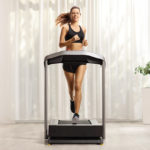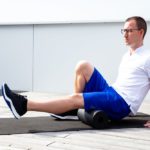It may seem strange, but I have many friends who are not athletes, and they take chronic knee and back pain as a given as their youth has gone. Strength workouts are a great way to solve this issue. These are some of the many benefits an adult body will experience:
Improved posture
- improved stability
- Lowering cholesterol
- strengthen the bones and heart;
- Alzheimer disease prevention.
Weightlifting, compared to basic strength training, is a sport that requires more mobility, flexibility and coordination.
Even the pessimistic of coaches can’t deny the incredible growth of Master weightlifting in the last 10 years. In 2015, only 244 athletes competed in the US Masters Championships, with women making up 44% and men 56%. By 2019, there were 718 (women 60%, men 40%).
MASTER DIESEL was one of my most popular programs a year ago. More than 450 athletes from around the globe have passed it, which is impressive!
Why do people over 35 get involved in sports? This is a good question… maybe it has something to do with the extra benefits.
- it’s cool;
You set specific new goals.
You find a group of people who share your interests;
You have the opportunity to compete.
Weightlifting also teaches your muscles and nervous system to switch quickly between actions. Physical strength is important, but the ability to move quickly enough to avoid losing balance when a bus brakes suddenly is even more crucial. This skill is called “reactive stabilty” by physiotherapists, and it’s something that people lose as they age.
Strength and coordination training also improves our learning abilities. More white matter in the brain means better connections between different parts of the brain. This leads to an increase in “brain-derived Neurotrophic Factor” that contributes to new nerve cell creation.
If you just go to the gym for sweating, then your only goal is to get tired. It’s not wrong, but competing to gain new weight and trying to reach new goals will make you more motivated.
When you set a goal for yourself, your training, diet and daily routine will become second nature. Strength is closely linked to health, so if something doesn’t work towards your goals, there will be no results.
Weightlifting won’t make you feel bad for being weak. You can use your performance to monitor the health of an individual.
Recently, I received several letters about this topic. I answered all of them immediately but I think that this article will be interesting to others as well. Here are some tips that people in their middle age should consider when they begin to exercise.
Before starting your training, Master athletes should take note of the following advice:
1. Medical testingAfter being a couch-potato for 10, 20, or more years, you may feel the urge to begin a new lifestyle on Monday. Before you make any major changes such as “Turning The World,” consult your doctor. Discuss injuries or muscle imbalances from the past, and check on your heart health.
- Intensity of training and frequency
You can continue your normal life without being hindered by sore muscle if you are a Master Athlete at the entry level.
Factors like mobility, performance, and learning ability can limit entry-level training. There is no rush to start anything!
You should break down your workouts into different exercises. For example, you can have a day for snatching, another day for cleans, and yet another day just for jerks. It makes sense to break up a strength training program into days for squats or pulls. You can also focus on shorter amplitudes – snatches or pulls in the middle of your thigh; bench squats etc. - Nutrition and recovery
Nutrition is a vital part of any workout regimen. Exercises damage muscles, and your body is forced to rebuild them stronger. Your recovery and repair will likely fall short of what you expect, and it may stop you from progressing. You might also not be able fully benefit from all the hard-earned gains you have made, like better sleep and more energy. Strength training nutrition follows the same rules, regardless of sport. You need enough carbohydrates and protein. Athletes over 40 are advised to reduce sugar and increase omega-3 fats intake in order to protect their heart and blood vessels and prevent joint inflammation. - Expectations and Reality
You should be realistic when you set your goals if you want to see results fast. Decide how much time, both for training and recovery, you can devote to your goals. The timeframe will depend primarily on your work and personal life. Stress management, diet, rest, etc., are all important factors. If they truly want to help their athletes, I believe that all coaches must be completely honest with them. False hope is unprofessional and unfair to give athletes.
Loads and planning are important to consider when it comes to training.
- Remember that we don’t get younger. So, learn to listen to your body. Always plan for the long term.
- In my opinion, an experienced Master Athlete shouldn’t work out more than 4 times per week: 3 is a gold standard and the 4th one can be light/technical/recovery.
- My rule for Masters is to learn the perfect movement, then lift heavy weights. It wouldn’t be possible to do it any other way!
I tell my athletes that they should always be mindful of their health and choose a weight that is “comfortable”. Some sets are marked as OPTIONAL, so that you can only do them if they feel good.
Keep in mind that the majority of your weight should be between 70-90%, with an average of around 80%. Focus on speed and stability. Add kilograms when you feel confident and have stable techniques with your regular weights. - It is not necessary for master athletes to train constantly in the zone of 90%+. Let the young, hot weightlifters have at it. I think that self-doubt can lead people to lift excessively before a competition, but the main goal is to ensure there are no mistakes during your training sessions.
- I have found that those who have participated in sports before and are masters have a better range of motion than those who are beginners. They will all have some sort of problem! Some people may have difficulty squatting deep, while others might struggle to open their chest. You can incorporate many exercises into your warm-ups or cool-downs in order to improve your mobility. Exercises that are essential for this include overhead squats (snatch grip), Sots presses with a snatch-grip, and single-leg work (Romanian Deadlifts & Squats). These exercises will help improve hip flexors and glutes. Ignoring mobility can reduce the quality of training and lead to injuries. This applies to athletes of any age and level.
- Speed is an important factor in training. Many master weightlifters can do front squats with 150-160% their best clean. Strength is more durable than speed, which also depends on coordination. Strength is useless in weightlifting if your speed level is low. You can see a lot athletes in masters competitions who are strong, but lack explosive strength and mobility. It is crucial for masters to develop speed because it allows them to engage the correct motor neurons, generate strength quickly, and increase their workload density.
- It is important to do strength training, but master weightlifters will benefit from working with a load that they can comfortably lift and reps that are reasonable. As we age, muscle mass decreases naturally. So even if you are following the singles-doubles plan, do some additional sets with lighter weights.
The Master STRENGTH program is my new program for “adults” looking to achieve high-quality results in strength. The program is designed to boost strength through a comfortable and harmonious training regimen consisting of 3-4 workouts a week.
This program is based on basic training, working on large muscle groups (legs and back), abdominal muscles (core) and stabilizers. This program is perfect for those who enjoy squats or deadlifts. It also includes a variety of presses as well as other pumping exercises. This program includes a fourth optional workout which focuses on the clean and jerk technique.
This program will help you to gain strength in 12 weeks. There’s no need for overtraining because the loads are evenly distributed and follow a wave pattern. The fourth week is the tapering week.
Weightlifting and strength-training is an excellent way to keep fit at any age. It is important to be aware of your abilities and peculiarities!
I wish you success in your training and competitions, Masters!
Related Articles:
Welcome to MASTER DIESEL
Nutrition for Joints and Ligaments
How to Lose Fat and Keep Your Muscles
DISADVANTAGES TO BEING A WEIGHTLIFTER
You may be interested in:
Beginner Core Workout Plan
Overhead flexibility routine
Masters Weightlifting Program
Weightlifting Program for 8 Weeks – Olympic Weightlifting
Bodybuilding program for olympic lifting weights
barbell emom program











